What is Scanner?
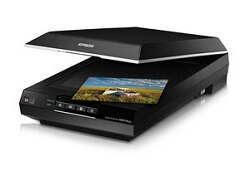
A scanner is an electrical device that reads and converts documents such as photos and pages of text into a digital signal. This changes the documents in a form that can be viewed and or modified on a computer system by using software applications. There are numerous kinds of scanners available in the market that have different resolutions.
Most scanners have a flat scanning surface as they are flatbed devices, which are mainly used for scanning magazines, photographs, and numerous documents. Furthermore, because most flatbed scanners have a cover that lifts up, they can scan books and other heavy things. A sheet-fed scanner is another type of scanner that is only able to accept paper documents. Although sheet-fed scanners have no capability of scanning books, some of their models include a feature of an automatic document feeder (ADF) that allows various pages to be scanned in sequence.
The scanner interacts with computer software applications to execute tasks. The data from the scanner is imported into these apps. Most of the scanners contain basic scanning software that makes users capable of configuring, initiating, and importing scans. Scanners are also able to import scanned images directly through various software. The software accomplishes this by scanning the computer’s installed plug-ins. If a scanner plug-in for Adobe Photoshop is installed, for example, users can create new photos directly from the linked scanner.
Although some programs like OmniPage and Acrobat can identify scanned text, the scanned images can also be edited by Photoshop. It is done by a technology, which is known as optical character recognition (OCR). Scanning software that includes optical character recognition has the ability to convert scanned text documents into digital text in a form that can be viewed and modified with the help of a word processor. Some OCR programs also have the ability to capture page and text formatting that led to possible of generating electronic copies of physical documents. Scanning is also the most dependable and cost-effective method of delivering images in the world of electronic data transmission.
Types of Scanner
There are various types of scanners that are used with a computer for different functions. Such are as follows:
Flatbed Scanners
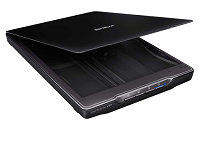
The most popular type of optical scanner is a flatbed scanner, which scans documents on a flat surface. These scanners do not require the document to be moved and are capable of capturing all of the document’s elements. Flatbed scanners come in a couple of different sizes for standard paper and are effective for delicate materials, like documents that are fragile, including also vintage photographs and papers. There are also some models of scanners available that help to reduce the size of desk space. For example, you can minimize the amount of desk space required by purchasing all-in-one models, which include a scanner and a printer. A flatbed scanner looks like as shown in the below picture.
These scanners are also effective for scanning books, articles, newspapers, and even DVD cases. If you have purchased a high-resolution scanner, they are also better for scanning photos as well. Because each object to be scanned must be put onto the flatbed and processed on this scanner, it is a time-consuming option. It is a superior option for individuals who need to scan a large number of papers.
Unlike other types of scanners, the process of scanning documents of the flatbed scanner is very easy. Users merely need to place the paper on the glass and close the lid to scan the document. Additionally, some other models of flatbed scanners can include advanced features such as Bluetooth or wireless connectivity as well as automatic document feeders.
Flatbed scanners are more versatile than sheet-fed scanners because they can scan thicker objects. Furthermore, unlike drum or handheld scanners, it does not necessitate document movement, resulting in a significant reduction in the danger of document damage during scanning. It also has the disadvantage; flatbed scanners can also be expensive, and they take more space as compared to other scanners.
Sheetfed Scanners
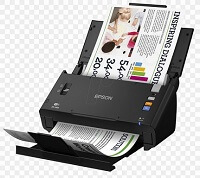
A scanner that allows the only paper to be scanned, known as sheetfed scanners. These scanners are a little smaller than regular flatbed scanners, and they feature a lesser image resolution. They are great for scanning enormous amounts of paper. These scanners are useful if you have a limited amount of room to deal with. They are commonly used by businesses to scan office papers, but they are less commonly used by archives and libraries to scan books, and they’re built specifically for scanning loose sheets of paper. These scanners have duplex capabilities, are capable of handling, have a duty cycle rating, and are fast in terms of paperweight and size (pages per minute). The sheetfed scanner is shown in the image below.
Sheetfed scanners allow you to scan multiple documents at once instead of turning pages manually after each scan. Like photocopiers, these scanners allow you to insert papers into a feeder tray and then scan one page at a time. Also, comparing other kinds of scanners, Sheetfed document scanners can be a bit more costly. But the extra investment could be beneficial if time is of concern.
Handheld Scanner
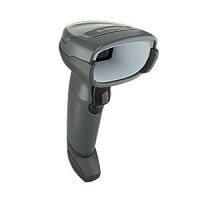
A portable scanner is a compact manual scanning device that functions similarly to a flatbed scanner. It is positioned above the thing to be scanned. You must place the document inside the scanner for flatback and sheetfed scanners to scan it. The handheld scanner, on the other hand, is dragged over the page to be scanned. It scans physical documents into their digital forms, which makes it capable of storing, modifying, forward, and emailing digitally. As flatbed scanners take up more space; therefore, when space is concerned, the handheld scanner is a mainly useful device. The below image is an example of a handheld scanner.
When utilising a portable scanner, the hand must remain firm at all times, making it a difficult operation. Even a little bit of movement of the hand can cause deformation of the scanning pictures. Typically, it is mainly used to evaluate goods in shopping stores. Also, the barcode scanner is one of the great advantages of a handheld scanner. These scanners are very popular, despite considering lower quality scanners. As compared to flatbed counterparts, they are less expensive and small in size. Additionally, they have the potential to scan items that would not fit in a flatbed scanner owing to size or placement. There are some models of handheld scanners available on the market that include additional features such as storing and sending scanned content to computers and other devices, including translations, definitions, and reading printed text aloud.
Drum Scanner
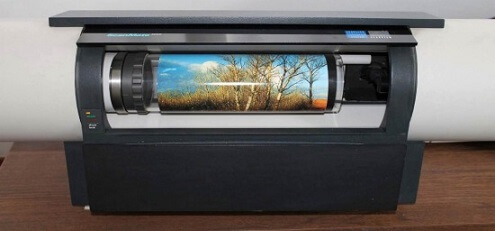
A scanner that uses a photomultiplier tube to capture the highest resolution from an image is known as a photomultiplier tube scanner. It scans with a photomultiplier tube rather than a charge-coupled device. A charge-coupled device is a gadget that is commonly seen in flatbed scanners. The photomultiplier tubes used by drum scanners are vacuum tubes that are excessively sensitive to light. A glass tube is available in the drum scanner, and the image is mounted on that. When the scanner starts to scan the image, the beam of light moves over the image, and photomultiplier tubes (PMT) pick up its reflection and process it.
Drum scanners are noted for their high resolution, which may reach more than 10,000 dots per inch (dpi). Furthermore, due to their cost and large size, they are not more popular than flatbed scanners in the market.
Photo Scanner
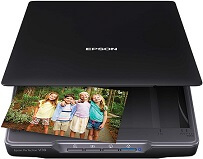
A type of optical scanner that is mainly used to scan photographs. Photo scanners provide high resolution and color depth. They are smaller as compared to general-purpose scanners. Typically, a photo scanner has the ability to scan 3×5-inch or 4×6-inch photographs with higher resolution. Also, the negatives and slides can also be scanned by high-end photo scanners. Some photo scanners come with software that can help you clean and restore outdated photos. A photo scanner is shown in the image below.
Film Scanner
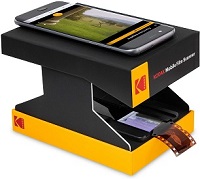
A film scanner is a device that scans photographic film and transfers it to a computer. It scans without the need of any printmaking intermediates. As compared to a flatbed scanner, it offers different benefits to scan in a print of any size; the photographer directly can perform certain aspects like a ratio of the original image on the film, cropping, adjusting, unmolested image on film, and more. Also, many film scanners can remove film grain and scratches and improve color reproduction from film through special software or hardware.
Portable Scanners
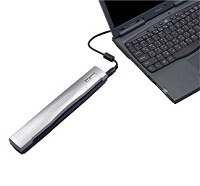
Portable scanners are designed in a way that can be easily carried around as they are small in size. Even some can be carried in the pockets, too, as they are as small as your PDAs. They are effective for text document scanning. They have limitations in terms of resolution. They are also available with a wireless facility. The below picture is an example of a cabled portable scanner.
These are not capable of scanning photographs as well as applications that need high-resolution scanning. Now you do not even need to desktop to get your work done because many smartphones come with a lot of applications that enable your smartphone into a pocket-sized scanner. These applications can be used for scanning pictures and editing them, scanning documents and converting them into PDFs, including scan bar codes. If you want to scan a sharp and detailed image, however, a flatbed or drum scanner is the way to go. Otherwise, you can get complete your work with the help of these productivity apps.
Advantages of scanner
There are many advantages of using a scanner; today’s multifunction printers are designed in a way that includes capable scanners, allowing you to scan documents without buying anything separately. They also do not take more space. Some advantages are given below, which are included of prominent benefits.
- Reliability: Unlike some modes of data transmission, scanning simply involves the conversion of physical images to digital ones. In the case of scanning, the role of the end-user is limited. They can also assist in the transmission or storage of crucial information because they are not reliant on two-way communication.
- Quality: Scanners are capable of reproducing images with high resolution and accuracy. Scanning, as opposed to fax machines, ensures the highest possible resolution for digital photos, whereas fax machines may struggle to replicate correct details. Scanners are also more useful in the photography and engineering fields.
- Efficiency: Modern scanners comes with ease of use as well as convenience. And, they are designed to offer better speed and efficiency.
- Cost-saving: The conversion of physical files into digital forms is one of the biggest advantages of scanning. Using a scanner offers environmental benefits as well, since it helps to conserve physical space that would otherwise be utilised for storage.
- Ease of use: Scanners are electronic devices that are very easy to use. In modern times, the scanners that are built into multifunction printers can be used freely without instruction or worry. Users only need to select basic options like document or photograph or color versus black and white because most settings are automatically adjusted and fine-tuned. You can also send the file to an email account or a computer after scanning is completed. Furthermore, users can also save the scanned file in a different format, such as PDF documents.
Disadvantages of scanner
Although there are multiple benefits to using a scanner, they also have their disadvantages as well. If you are using a desktop scanner for your home and office, it can be a valuable tool to get complete your work. In addition, both desktop and high-volume scanners might be useful for business. Before investing in a pricey scanning system, both home users and company owners should be aware of all scanner limits. The major drawbacks are listed below:
1. Scanned Output Quality Can Vary
Depending on the number of factors, the quality of the scanned output can be different. These factors include the quality of the scanner’s lens, the condition of the original documents and scanner glass, and the cleanliness of the scanner glass. If the original papers are in electronic format, a tool like Adobe Acrobat is usually the best option. This program will help out to convert these files to a PDF format, which can be read by anyone who has internet access or connection.
2. Scanner Maintenance Can be Expensive
In terms of Maintenance, the use of a scanner can be expensive as there are numerous companies that need a large amount of paperwork. To deal with this, they use high-volume scanners, which can be more expensive. Although these high-volume scanners can be useful tools, owners must replace the lamps on a regular basis to maintain them working at their best. Also, need to perform maintenance on the camera and lens as well. Thus, the maintenance cost can be much costly.
3. Scanners are Relatively Slow
Individuals and companies’ users need to think about the time taken in scanning their paperwork as scanners are also relatively slow. Although automatic feeders can help to save time, it can still take more time to scan a collection of documents. Also, scanner operators need to check out all pages to make sure that each page has been imaged. While going through the automatic document feeder, it is not unusual for pages to stick together. Therefore, operators need to concentrate on these problems carefully.
What Are the Uses of Scanners?
A scanner captures images using reflected light and converts them into files that the computer can read and interpret in order to show them. Scanners can scan images in black-and-white or colour, and they come in high- and low-resolution models. The scanner can be used for a wide variety on the basis of users’ requirements.
Copying
Copying is one of the most common uses of a scanner. A scanner can be used to make multiple copies of a poster, brochure, worksheet, or other document so that it can be printed as many times as necessary. It will function as if your PC were connected to a printer. In addition, in contrast to a copier, a scanner offers users the benefit of modifying their documents before they print their copies.
Research
Scanners are also played an important role in research projects. Long-term research projects, whether for school or business, nearly always need acquiring information from borrowed library books or other privately held sources. The information is necessary for later research if it is collected from these sources. As a result, it can be referred to at a later time without having to scan the original document into your computer. This enables users to return the source without the need for losing the information found in it.
Archiving
Digital archiving is another one of the popular uses of the scanner. It’s a method for making and saving digital copies of hard copies of documents. Business records, personal documents, and tax paperwork, as well as family letters, are examples of these documents. It contains many copies of important papers to aid recovery in the event that the originals are lost, stolen, or destroyed.
Sharing Photos
Through the internet, scanners can also be used by users to share hard copy photos with friends and relatives. Although professional and amateur photographers commonly use digital photography with the prevalent format, many people still have old family pictures that were never recorded digitally because these photos were captured with traditional film cameras.
How is a scanner connected to the computer?
Although today’s USB cable is most interface used to connect a scanner to the computer, there are many different interfaces that can be used. They are as follows:
- Firewire
- Parallel
- USB
- SCSI
Firewire connection: It is the fastest method as compared to others, which is referred to as IEEE-1394. It was developed by Apple in 1995 and has been introduced in the latest high-end scanners. It deals with scanning high-resolution images as it is a digital bus with a bandwidth of more than 400-800 Mbps. It is hot-swappable and can transfer data at a maximum speed of 800 MBPS and handle up to 63 units on the same bus.
Parallel Connection: This is the oldest and slowest method of connecting a scanner to a computer, and it’s also known as the Centronics interface, Centronics port, or Centronics connection after the firm that invented it. Epson later turned it into a 25-pin (type DB-25) computer interface. It has a data transfer rate of 70 kbps and is often used to connect printers to computers.
Universal Serial Bus (USB) Connection: It is the most economical and latest method of data transfer, which stands for universal serial bus. It is a simple plug-and-play interface that connects to the scanner quickly. It also enables a computer to communicate with peripherals and other devices at speeds of up to 60 megabits per second.
Small Computer System Interface (SCSI) Connection:
A SCSI interface card, pronounced “Scuzzy,” can be used to implement this strategy. A specialized SCSI card was used in older scanners. It was completed for the first time in 1982, and it can accommodate eight or sixteen devices using Wide SCSI.
Working of Flatbed Scanner
The basic difference in how old scanners and modern scanners work is the sort of image sensor they use. Modern scanners use a Charge-coupled device, whereas old scanners were used a photomultiplier tube. A CCD sensor’s principal job is to capture light from a scanner and convert it into proportional electrons. The charge created will be higher if the intensity of light that hits the sensor is higher. A flatbed scanner incorporates a number of devices, including the following:
- Charge-coupled device (CCD) array
- Lens
- Power supply
- Scan head
- Stepper motor
- Glass plate
- Lamp
- Filters
- Stabilizer bar
- Belt
- Cover
- Control circuitry
- Interface ports
- Mirrors
Although, according to the manufacturer’s design, the configuration of the above components is different, the basic functioning is almost the same.
A flat transparent glass bed is included in the scanner, and under it, the lenses, lamp, filters, CCD sensors, and mirrors are built. When a document is to be scanned, it is needed to place on the glass bed. A scanner also comes with a cover, which can be white or black and is used to close the scanner. The color of this cover helps to offer uniformity in the background. And, this uniformity helps to analyze the size of the document, which is to be scanned. You may not be able to use the cover if you are going to scan a page from a book due to its heavier size. Most of the scanners utilize a CCFL (cold cathode fluorescent lamp).
A stepper motor is included in the scanner, which moves the scanner head from one end to the other. The scanner head compresses CCD sponsors, mirrors, filters, and lenses. The scan head, in a constant path, moves parallel to the glass bed. A stabilizer bar will be offered to compromise it as deviation may occur in its motion. The scanning is dependent on the scan head. The scanning of the document is completed when it reaches the other end of the machine as the scan head goes from one end to the other. For some scanners, a two-way scan is performed when the scan head needs to return to its original location before doing a complete scan.
When the scan head slides under the glass bed, the lamp’s light strikes the paper and is reflected back using angled mirrors. On the basis of the device’s design, there may be either 2-way or 3-way mirrors. The mirrors will be angled according to the reflected image, which will be meeting the smaller surface. Finally, the picture will pass through a filter before reaching a lens, which will cause the image to be focused on CCD sensors. Then, the light is converted into electrical signals by CCD sensors. Below is given a picture that may help out to understand the working of the scanner.
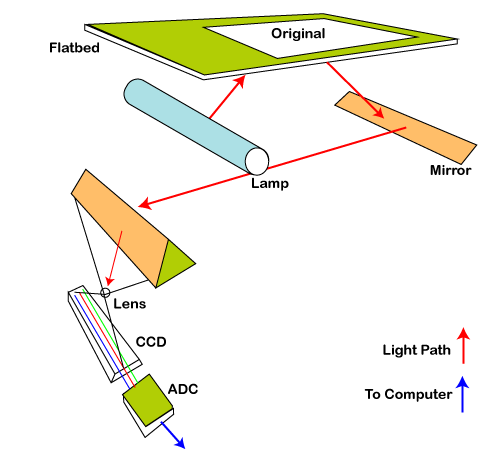
The electrical signals will then be translated into picture format inside the computer. This reception may differ as a result of differences in lens and filter design. A method that is employed is three-pass scanning. In this technology, each composite colour is communicated between the lens and the CCD sensors with each movement of the scan head from one end to the other. The scanner software converts the three filtered images into one single-color image after the three composite colours are scanned.
Another method is also used, which is a single-pass scanning method. In this method, the image will be split into three pieces, which image is captured by the lens. Any of the color composite filters help to pass these pieces. Then, CCD sensors receive the output. Thus, with the help of a scanner, the single-color image will be combined.
In some recent scanners, the CCD sensor has been replaced by the contact image sensor (CIS). Although, as compared to the CCD scanner, this method is not more costly, it offers lower quality and resolution of the image.
When was the first scanner created?
Modern scanners are modeled around early telephotography and fax input devices. The pantelegraph, invented by Giovanni Caselli, was an early type of facsimile machine that transmitted over standard telegraph lines. It was the apparatus that was employed for the first time in practical service in the 1860s. It employed electromagnets to drive and synchronize pendulum movement and scanned and reproduced images from afar. It was capable of transmitting drawings up to 150 by 100 mm in size, including signatures and handwriting.
By scanning with the help of a photocell and transmitting over standard phone lines, Édouard Belin’s Belinograph of 1913 laid the groundwork for the AT&T Wirephoto service. From the 1920s through the mid-1990s, a Belino, a service similar to a wirephoto, was utilized in Europe. It was used by news organisations and consisted of a rotating drum with a single photodetector. It rotated at 60 to 120 rotations per minute on average. They send a linear analogue AM signal to receptors, which may print the proportionate intensity on special paper using conventional phone lines. Color photographs were delivered in three distinct RGB filtered images due to transmission expenses.
The first scanners were invented in the 1860s. However, at the National Bureau of Standards in the United States, a guy named Russell Kirsch developed a scanner that is still in use today. For the first time, this gadget scanned a photograph of Kirsch’s son. This black and white graphic had a resolution of 176 pixels on each side and sized only 5×5 cm.
Why is a scanner an input device?
A computer scanner, often known as a digitizer, is a type of input device. It takes data from a document or a photograph and converts it to digital data. A scanner, like a printer (which is an output device), cannot receive data from the computer and can only give data to the computer. Therefore, it is known as an input device.
What are the parameters of a Scanner?
- One of the main parameters of the scanner is the resolution of the image. According to resolution and cost, each scanner varies. The resolution may be represented with the help of samples per inch and also pixels per inch. Manufacturers typically define the scanner’s interpolated resolution rather than the scanner’s exact optical resolution. The latest flatbed scanners have interpolated resolutions of 5400 ppi and even 12,000 ppi for drums.
- Interpolated resolution expresses to increase the resolution of the picture through scanning software. This is done with the help of increasing additional pixels between the document or image that one actually scanned by the CCD array. But only as an average of the adjacent pixels can be added to these extra pixels. For example, the manufacturer declared the interpolated resolution of a scanner is 600×300 dpi and has a true resolution of 300×300 dpi. Thus, with the help of software, an extra pixel is added in each row of the CCD sensor. The size of the file increases when the resolution increases. Lossy compression techniques such as JPEG can help to reduce the file size. This method offers the benefit of reducing the quality of the picture to a small amount.
- At least, a scanner contains a resolution of approx. 300×300 dots per inch (dpi). It improves with the help of the stepper motor’s precision, as well as an increase in the number of CCD sensors row by row.
- When the scanner’s lamp brightness is increased in conjunction with the use of high-quality optics, the image clarity improves. Another setting is the density range, which aids scanning in reproducing small shadow and brightness details.
- Another parameter is colour depth, which refers to the amount of colours in colour scanning. The scanner is capable of reproducing it. Despite the fact that scanners with 30 and 36 bits are available on the market, a 24 bit/pixel scanner will suffice.
